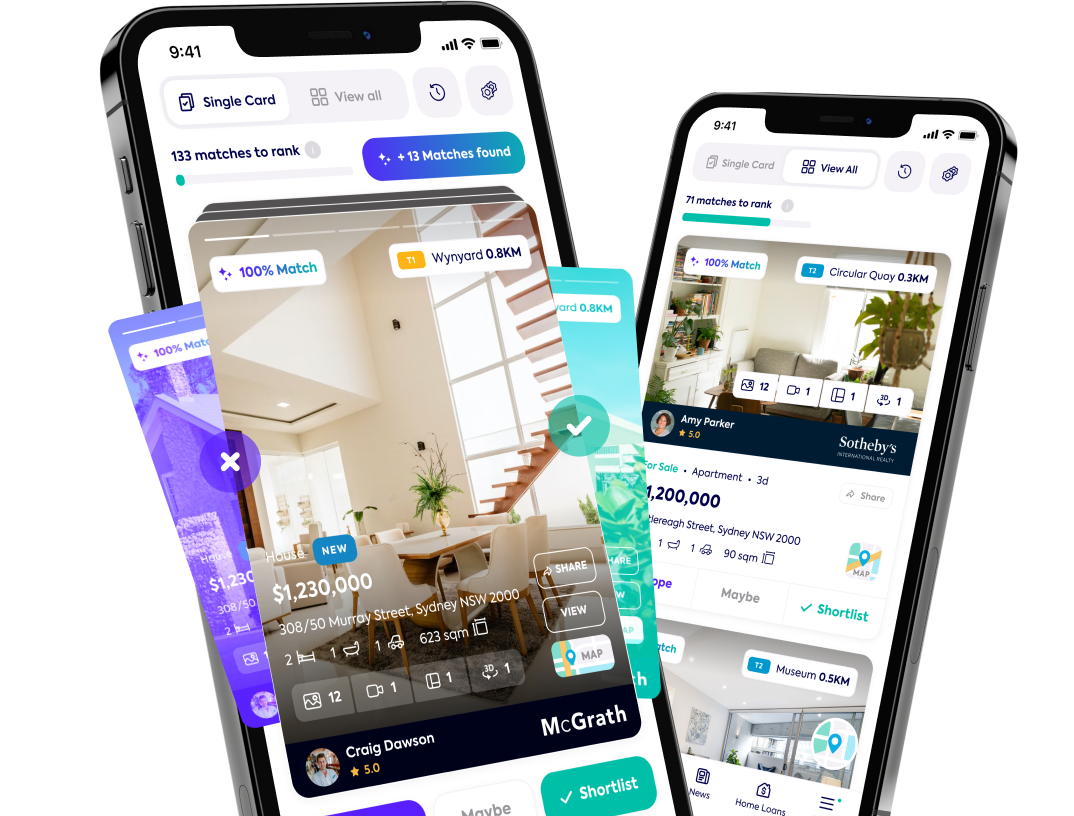If you’re trying to find out how to rent a home, you’re probably also starting out the home rental process.
There’s a lot to think about—location, budgeting, paperwork… and to add to that, sometimes it all has to be sorted out in a short period of time.
But there’s no real need to worry. Getting yourself organised is really the key. And by being organised, what we mean is to figure out the hard stuff first.
So in the vein of organised work, we’ve put together a checklist of everything you need to know and have before you begin. And since you’ve chosen to rent in the whole rent or buy dilemma, we might as well make the most if it!
Whether it’s your first time renting or your twentieth, we sum up your list of priorities to come.
Related articles:
- Rental Prices Are Soaring – Here’s What You Need to Know
- How Much Can a Landlord Increase Rent?
- How Long Does a Rental Application Take to Be Approved?
Organise paperwork for rental application

Earlier, we talked about figuring out the hard stuff first.
Well, here it is—the paperwork. It’s always good to get this out of the way before you even start searching because you’ll already have everything on hand.
And if there’s any information on the rental page that tells you what kind of documentation the property agent would need, you’ll be all the more at ease knowing you’ve prepared everything.
The needs of each agent/landlord will vary, but this is a common list of requests in an application:
- Your ID: this can be your passport, driver’s licence, Medicare card, health care card, birth certificate or car registration.
- References: these are the people that will vouch for your good behaviour. You only need a couple of these so choose wisely. Employers and former landlords would be an excellent choice.
- Your rental ledger: if you’ve rented before, you’ll have one of these. They’re a history of all the rent payments you’ve made in the past. If you don’t have one, read on for alternatives.
- Past rent receipts/notices: this is to back up your rental ledger.
- Previous utility bills/account statements
- Payslips and/or bank statements: this is to demonstrate proof of income. Or if you’re not earning an income, you’ll need to show you have enough in the bank to cover the rent.
First-time renters may have some issues here as some (not all!) landlords aren’t keen on renting to novices.
But fret not, we’ve all been there.
To strengthen your application, you might offer more references. Try asking a previous neighbour, or if you’ve volunteered in the past, include a note from your supervisor. Any positive review will help!
How to budget for rent
According to Ubank, we shouldn’t be spending more than 30% of our income on rent.
Another calculation method would be the 50/30/20 one where you divide your income into spends.
So, let’s say…
You earn $1,000 a week.
Set aside 50% of that for necessities like rent, groceries and utilities/bills.
30% of that or $300, would go to leisure activities and fun things like dinners out and shopping.
And the final $200 would go to your savings account.
Whichever budgeting method you use, don’t forget to include other expenses like the move, and the potential need to outfit your home with new appliances and furniture.
How to find a rental

Now comes the fun part—looking for the best rental home out there for you! Just don’t be overwhelmed with the options out there, because there may be a lot.
Inversely, don’t fear having too few options! The market is constantly evolving, so best to get out there early so you have plenty of time to do your research.
Soho has thousands of rental listings being updated every single day. You can simply browse listings from our search page or better yet, download the app and fill out your match profile to get property updates which fit within your criteria.
And what’s even better is that you can save locations and we’ll just send you new properties in your area as they pop up.
And if you’re not entirely sure of where you want to live yet and want to be inspired, check out our article on the hottest suburbs in the country.
What to look out for when inspecting a rental property
This is part two of the fun although, you should know what to look out for when renting a house or apartment.
While some take the risk and don’t even physically visit the properties, we strongly encourage you to go there yourselves.
Photos on property pages don’t always reflect the real thing and there’s nothing like feeling out a place by yourself.
Start off organised by reaching out to the agents and scheduling inspections. Meanwhile, put together a calendar of inspection days so you don’t miss anything.
Arrive early ahead of the inspection times and bring along a set of the printed documents needed for the application. That way, if you get a good vibe, you can start the process right then and there.
Now, when you’re out at the inspection, there are a few questions you want to ask yourself:
- Are there any noticeable damages to the property? Take photos and mention these to the manager.
- Are all areas of the property well-maintained, including the outdoors?
- Is there in-built storage space or will I have to buy more furniture to store my things?
- If there’s no on-site parking, do I need parking permits?
- Is it centrally heated or air conditioned?
- What’s the security like for the property? Do the windows have locks? And has the property been burgled before?
And while you’re at it, have a chat with the property manager to finalise any rental budgeting concerns. You can ask questions like:
- Besides the rent price, is anything else included?
- How much is the bond? (This is a cash security for the landlord to protect them against damages or missed payments. While they’re not mandatory, they’re commonly employed and vary by state.)
- What else do I need to pay for?
- What deposit is required? And under what circumstances is the landlord allowed to deduct money from the deposit/security?
When you’ve calculated everything and done your own assessment of the above, think about whether it works for you and your budget.
What happens when you sign a rental lease

If your application has been approved by the landlord, you’re in! There are just a few key steps and notes to the signing process to make sure you’ve protected yourself.
You’ll have to sign a tenancy agreement which is legally binding between you and the landlord. Expect to see information on it like:
- How long the period of lease is. This depends on whether it’s a periodic (term to term) or fixed (predetermined period of stay).
- The rental amount, when it needs to be paid and how
- The bond amount
- Other special conditions (about maintenance, pets etc)
There’s also the condition report, which is a detailed assessment of the state of the property at the start of your lease.
You should double-check this and verify that whatever is mentioned in the report appears on the property itself and vice-versa. If you notice any other damages, raise this with the landlord or agent.
You’ll be allowed a short period of time to do your own estimations of the report.
It’s really best to be meticulous about this because if anything comes up later on, such as a damage that might or might not have been there prior to your arrival, you may be liable to have your bond used for repairs.
Once that timeframe is over, the report is automatically deemed accurate. So use those days efficiently.
Happy Hunting!
We’re always sharing great rental properties that have caught our eye. Keep browsing our search page to see more rentals. And remember to download our app to get the full Soho experience.
Then once you’ve found the perfect rental, we can guide you through making it look spick and span.














